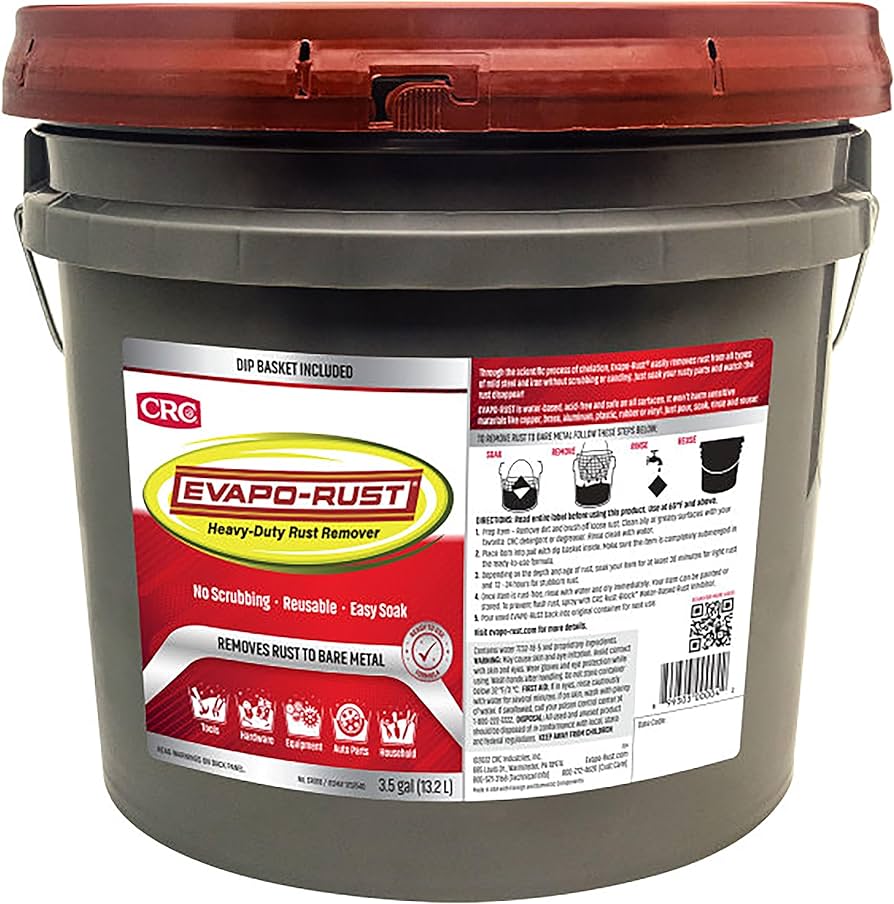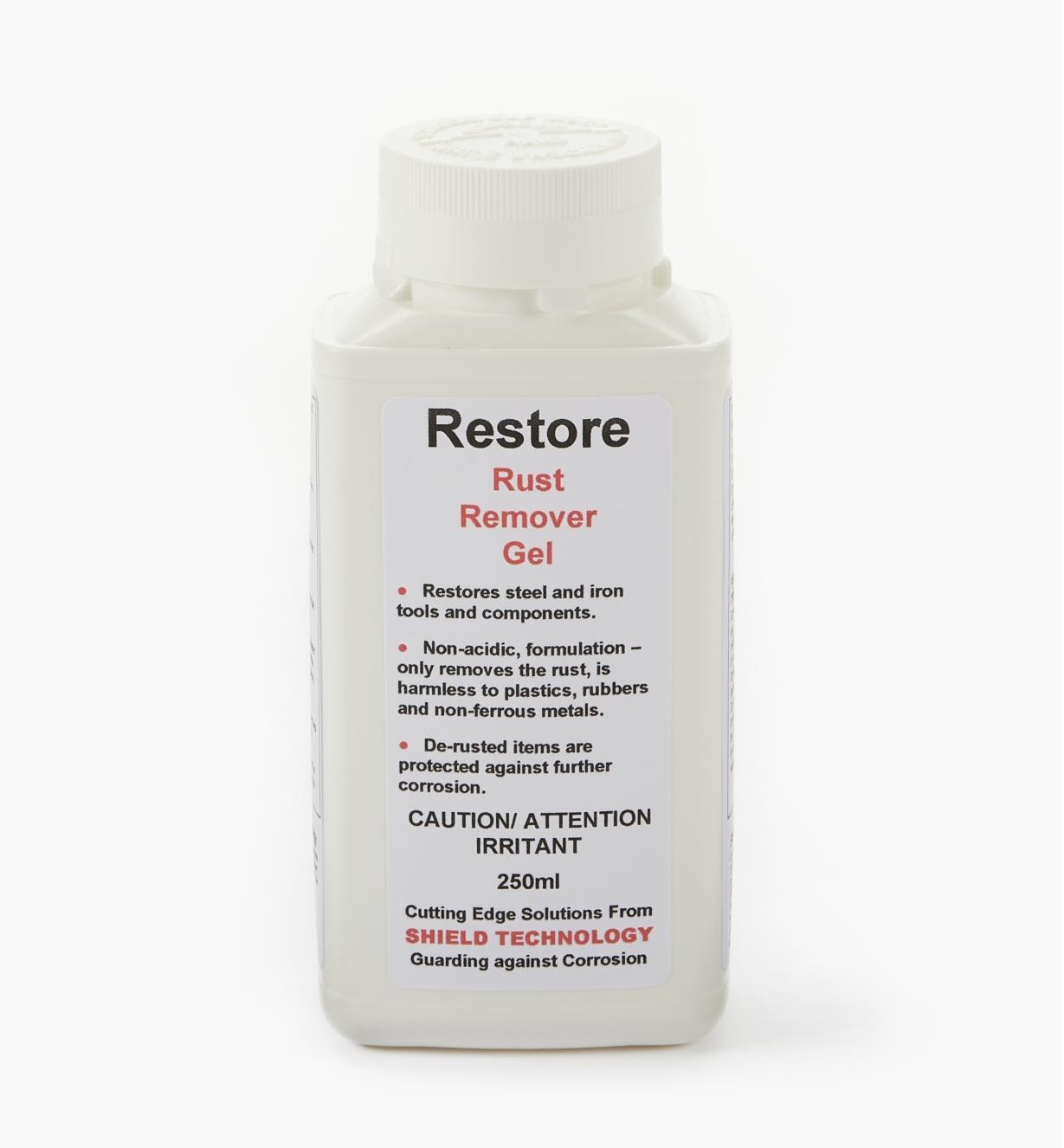
Rust, the bane of every car owner’s existence, is a relentless force that can transform once pristine auto parts into corroded, unsightly remnants of their former selves. While traditional rust removers often rely on harsh chemicals that can pose health and environmental hazards, a growing number of non-toxic alternatives offer effective and eco-friendly solutions.
Types of Non-Toxic Rust Removers
Non-toxic rust removers harness the power of natural ingredients or gentle chemical reactions to dissolve rust without compromising safety or the environment. Common non-toxic rust removers include:
-
Baking Soda: Baking soda, a household staple, is a mild abrasive that can effectively remove surface rust.
-
White Vinegar: The acidic nature of white vinegar makes it a powerful rust remover. However, its pungent odor and potential to damage certain materials require careful use.
-
Lemon Juice: Lemon juice, another acidic solution, can tackle rust while leaving a pleasant citrus scent.
-
Electrolysis: Electrolysis, a chemical process, utilizes electricity to break down rust into its elemental components.

Choosing the Right Non-Toxic Rust Remover
The choice of non-toxic rust remover depends on the severity of the rust, the type of metal, and personal preferences. Consider these factors:
-
Severity of Rust: For light rust, baking soda or lemon juice may suffice. For heavier rust, white vinegar or electrolysis might be necessary.
-
Metal Type: Some non-toxic rust removers, like white vinegar, may not be suitable for certain metals, such as aluminum. Research compatibility before use.
-
Personal Preference: Some prefer the simplicity of baking soda, while others prefer the odorless nature of electrolysis.
Applying Non-Toxic Rust Removers
Proper application is crucial for the effectiveness of non-toxic rust removers:
-
Safety Precautions: Wear gloves, eye protection, and a mask, especially when using white vinegar or electrolysis.
-
Preparation: Clean the affected area to remove dirt and grease. For electrolysis, submerge the part in a conductive solution.
-
Application: Apply baking soda as a paste or sprinkle it on the rust. Soak the part in white vinegar or lemon juice. Connect the part to a power source in the electrolysis setup.
-
Reaction Time: Allow the baking soda paste to sit for 30 minutes to an hour. Soak the part in vinegar or lemon juice for several hours or overnight. Electrolysis may take several hours.
-
Removal: Scrub the rust with a brush or scouring pad. Rinse thoroughly with water. Neutralize any remaining acid with baking soda paste.

Maintaining Rust-Free Auto Parts
Prevention is always better than cure. Here are tips to keep rust at bay:
-
Regular Cleaning: Wash and dry your car regularly to remove dirt and moisture that can accelerate rust formation.
-
Protective Coatings: Apply rust-preventive coatings, such as wax or paint, to exposed metal surfaces.
-
Garage Storage: Park your car in a garage or under a cover to shield it from the elements.
Troubleshooting
Common issues with non-toxic rust removers and their solutions include:
-
Ineffective Removal: For stubborn rust, repeat the application process or consider using a stronger non-toxic option.
-
White Residue: Baking soda paste may leave a white residue. Rinse thoroughly with water or use a vinegar solution to neutralize.
-
Dark Stains: Electrolysis may leave dark stains on some metals. These stains can be buffed off with a polishing compound.
Non-toxic rust removers offer a safe and environmentally friendly way to combat rust on auto parts. By choosing the right remover, applying it correctly, and practicing preventive measures, car owners can keep their vehicles looking their best and performing at their peak for years to come.
Important Note
While non-toxic rust removers offer a safer alternative, they may not be as fast-acting as their chemical counterparts. Be prepared to invest more time and potentially repeat the application for heavily rusted parts.
Benefits of Using Non-Toxic Rust Removers
There are several advantages to choosing non-toxic rust removers for your auto parts:
- Safer for Health: Non-toxic removers eliminate the risk of exposure to harsh chemicals, protecting your skin, eyes, and respiratory system.
- Environmentally Friendly: These removers often use natural ingredients and are less likely to harm the environment when disposed of properly.
- Readily Available: Many non-toxic removers, like baking soda and white vinegar, are readily available at home or local stores, making them a cost-effective option.
- Gentle on Metals: Unlike some chemical removers that can damage delicate metals, non-toxic options are generally gentler and less likely to cause pitting or etching.
- Pleasant Odors: Some removers, like lemon juice, even have a pleasant odor, unlike the often pungent fumes of chemical rust removers.
When to Consider Professional Help
For extensive rust damage or situations where non-toxic methods prove ineffective, professional help might be necessary. A professional mechanic or restoration service can:
- Assess the Damage: They can accurately assess the severity of the rust and determine the best course of action.
- Utilize Specialized Tools: Professionals have access to specialized tools and techniques for removing heavy rust, such as sandblasting or media blasting.
- Apply Protective Coatings: They can apply professional-grade rust-protective coatings to prevent future rust formation.
While professional services may come at a cost, they can save you time, effort, and ensure a thorough job, especially for deeply rusted parts.
Expanding on Electrolysis
Electrolysis is a unique non-toxic method that deserves further explanation. Here’s a deeper dive:
- The Process: Electrolysis works by submerging the rusted part in a conductive solution (like baking soda and water) and applying an electric current. The current causes the iron oxide (rust) to break down back into its elemental components, lifting it from the metal surface.
- Benefits: Electrolysis is particularly effective for removing heavy rust from intricate parts or areas where other methods might be difficult to reach.
- Safety Precautions: Electrolysis requires caution. Always wear gloves, eye protection, and work in a well-ventilated area. Consult online tutorials or a professional for proper setup and safety measures.
Conclusion
Non-toxic rust removers offer a safe and effective way to combat rust on your car. By understanding the different options, their applications, and limitations, you can choose the best method to keep your vehicle looking its best and functioning smoothly for years to come. Remember, prevention is key. Regular maintenance, cleaning, and protective coatings can significantly reduce the need for rust removal in the first place. So, embrace the power of non-toxic solutions and keep your car shining brightly!

Leave a Reply